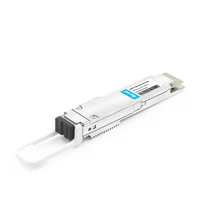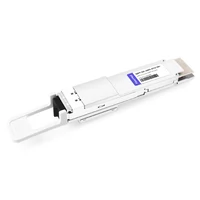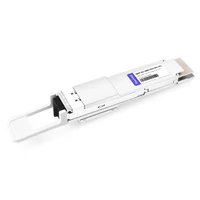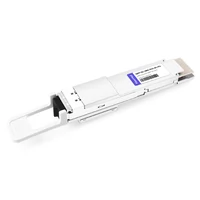Considering the present dynamics of optical networking, launching the 400G QSFP-DD pluggable coherent optical module is yet another paradigm shift in data transmission technology. This module comes closer to meeting the increased bandwidth and compelling data-handling needs of communication networks. With industries moving to embrace 400G technology at scale, the cohabiting format of the QSFP-DD presents an efficient option with better dimensions, including increased reach and power efficiency. This paper describes the detailed engineering features, interoperability, and application possibilities of the 400G QSFP-DD module to make specialists aware of modern network restructuring prospects and requirements for new infrastructure.
Table of Contents
ToggleWhat is the Acacia 400G Optical Module?

The Acacia 400G Optical Module is a state-of-the-art plug-based coherent optical module that provides facilities for transmitting 400 Gigabits per second (Gbps) over glass optical fiber-based networks. Due to its advanced digital signal processing (DSP) and photonic integration, the module enables long-distance, metro and data center interconnect applications. It has a form factor of QSFP-DD, which is backward compatible, which makes it simpler and more efficient for deployment and expansion on existing network architecture. It also helps enhance performance and reduce power consumption and latency, essential for network systems to upgrade to better cope with the increasing demand for data.
Features of the 400G Optical Module
Several advanced features in the 400G Optical Module specifically help improve the performance of high-speed data transmission applications. The optical interfaces are equipped with features such as coherent detection technology that guarantees signal integrity over long distances and digital signal processing for efficient use of bandwidth and error reduction. A high integration of photonic components is presented in the module to achieve better energy efficiency and low operational costs. It also operates at flexible grid capabilities and enables efficient allocation of bandwidth. To this end, the hot-swappable QSFP-DD form factor enhances upgrade and maintenance with minimal network downtime and continues to scale to cope with the need for change in how network connections are made.
Benefits of Using the Acacia Module
The Acacia module incorporates many beneficial features for today’s networking infrastructure. First, its high power efficiency leads to less energy usage, which means lower operational costs and a lower carbon footprint. This is progressively critical as the low latency associated with the module optimizes the performance of latency-sensitive applications by providing fast data processing and transmission. Also, its ability to integrate with current network infrastructure protects the investment as it reduces the likelihood of change in the hardware, which is essential in introducing coherent pluggables. Finally, what these coherent detection technologies and the QSFP-DD form factor offer is the possibility of upgrading and adding more networks with around the minimum costs, enabling a response to the increasing demands of data traffic without many challenges.
How Does the QSFP-DD Technology Work?
The QSFP-DD, also known as Quad Small Form-factor Pluggable Double Density, operates by putting two numbers of high-speed electrical interfaces within the same 4-lane. This improves the maximum data rate using a broadband eight-lead interface operating up to 400 Gbps. Consumers increasingly opt for more bandwidth and greater port density in their network devices. The power handling capacity has also improved using data modulation strategies such as PAM4 with advanced heat management approaches. This combination still makes it possible to transmit information efficiently without replacing the entire communication network.
How Does the Coherent Optical Module Impact Networks?
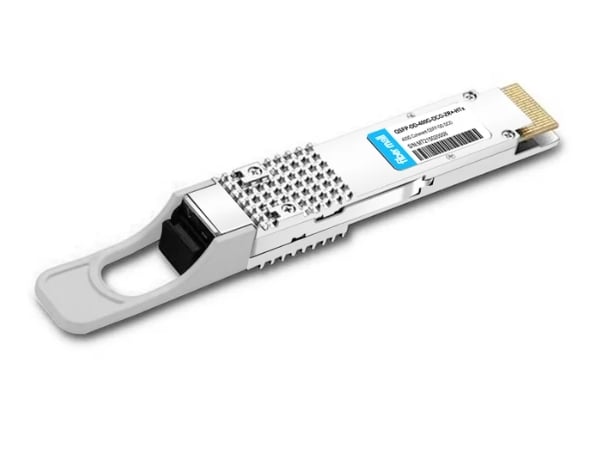
Enhancements in Optical Performance
Modular coherence optics are modernized optical components that help maintain the integrity of an optical signal over longer distances through better modulation. It enables the improvement of such vital characteristics of optical signals as the signal-to-noise ratio, which facilitates adequate data transmission even in more complicated network topologies. The module is suitable even in environments with fast-changing network conditions due to its potential to vary modulation formats and baud rates. Also, the coherent optical module makes the links more reliable and tolerant to interference by including forward error correction schemes, supporting high-performance and scalable network topologies.
Role in Improving Optical Networks
The coherent optical module is crucial in facilitating the optical networks’ performance by increasing the networks’ flexibility and capacity. This is achieved through better spectral efficiency, where more information can be sent within the available bandwidth without installing extra fiber. The module can also be dynamically reconfigured, which allows the network operators to modify the data rates and the channel spacing according to requirements and, hence, make efficient use of the network resources. In addition, owing to its accurate performance and advanced error correction techniques, the modular guarantees how fast communication links can be accessed even under long-distance conditions, essential for modern-day, high-capacity/efficient optical networks.
Why Network Operators Should Consider the 400G Solution
Network operators must embrace the 400G solution since an ever-increasing demand for data requires advanced telecommunication. This solution enhances spectral efficiency, allowing the transmission of more extensive data sizes within the same bandwidth, which is critical as the network traffic continues expanding. Moreover, high-level modulation and error correction techniques used by the 400G solution ensure that signal integrity and reliability are maintained, essential for efficient service delivery across different networks. Thanks to its scalable architecture, it allows existing systems to integrate effortlessly, thus paving the way for future innovations without compromising the current state of the technology.
How Does the Acacia QSFP-DD Coherent Module Compare to Other Modules?

Differences Between Pluggable Optical Transceivers
The variants of Pluggable optical transceivers are pretty distinct in form factor, data rate, and reach – all of which significantly impact scaling the network and optimizing its performance. Basic models include SFP, QSFP, and QSFP-DD, which are widely used by today’s most sought-after transceivers. Smaller SFP transceivers have a data rate reaching up to 4.25 Gbps, which meets the low-end and short-HA applications in the data center. In contrast, the coherent pluggables feature even better performance. However, QSFP transceivers are more capacity-oriented than the latter, with rates between 10 Gbps and 100 Gbps capabilities, and are mainly deployed on 40G and 100G cables with mid-reach range. On the other hand, the latest generation of QSFP-DD transceivers offers a plethora of ultra-high data rates of up to 400 Gbps for the recent fiber networks, which are constantly required to handle a tremendous amount of data traffic with long-distance reach. These differences allow network operators to select transceivers to be deployed under specific scenarios governed by the cost and performance versus future requirements.
Comparison with Acacia 400G-OSFP-ZR Module
The Acacia 400G-OSFP-ZR module and QSFP-DD coherent module have been developed with the same target markets in mind. However, whereas the ZR module is intended for long-distance use, the OSFP ZR module offers further options for 400G Ethernet transport systems over a distance of up to 120 kilometers without any requirements for optical amplification and thus is capable of supporting data center interconnect DCI applications. At the same time, the QSFP-DD module also provides similar data rates but with lower peak power consumption and high port density with short to medium reach distance in a data center environment. Considering the physical design, it appears that the newer design of the QSFP-DD, which is more focused on the tamper-proof and compact internal deployment for cables, differs from ASB-plastic front panel elastomer surround with OSFP-ZR line card aimed at density and power. Therefore, the two modules’ applications will be guided mainly by network design requirements such as reachability, power consumption, and compatibility with the equipment, whereas structural size limits.
What Are the Applications of New 400G QSFP-DD Technology?

Use in Data Center Interconnects
I have found that applications of 400G QSFP-DD technology for data center interconnects, particularly in my case, positively impact network capacity and efficiency. This new technology provides excellent bandwidth, essential in moving bulk data between data centers. It allows high-density connectivity, thereby saving space and simplifying the management of network infrastructures. Further, the lower power and operating costs associated with QSFP-DD make it preferable to upgrade network designs for additional capabilities to cater to future growth in data granularity.
Implementing Coherent Optics at the Edge
In applying coherent optics at the edge, I discovered that increasing such technology helps enhance the capabilities and accuracy of optical communications. Coherent optics enhances the telecommunications network’s data-carrying capacity by using complex data modulation techniques and processing those data signals to achieve higher speeds than can be accomplished over current fiber networks. This technology is also beneficial at the network edge, enhancing performance without drastically changing the existing setup. The introduction of coherent optics at this layer also increases the reach of the network services and, at the same time, increases bandwidth efficiency. From the close observation of the current practices and the industry best practices, I have come to the view that incorporating coherent optic solutions is also a tactical decision to meet the increasing applications of edge networks and improve the efficiency of the network.
Potential for New Applications
The provision of advanced networks, including QSFP-DD and coherent optics, can cover some gaps in the existing data center and network edge environments due to the wide range of new possible application scenarios. Due to their attributes, in particular bandwidth efficiencies and low latency, these technologies will enable new applications like high-speed financial trading that require online data computing and quick data transmission. Furthermore, such technologies are scalable and flexible enough to easily integrate artificial and machine-learning processes that require enormous amounts of data. Last but not least, the operational efficiency and cost benefits arising from their deployment make such technologies ideal for enhancing cloud services such as virtual reality and augmented reality applications that require a lot of bandwidth and low latency.
Why Are DriveNets and Acacia Collaborating?
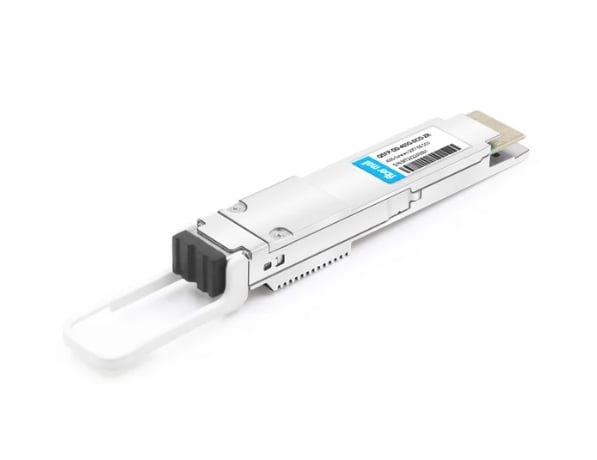
Overview of Their Joint Announcements
It has been reported that DriveNets partners with Acacia Communications to improve optical networks by incorporating Acacia’s technology into the DriveNets Network Cloud solution. This collaboration wants to meet the growing needs of the customers to deliver limited data transfer efficiently with higher architecture scalability and flexibility in optical networking. The combination is expected to enhance the optimization of the network deployments as there would be greater capacity and distance covered by data transport while appreciably lowering the costs involved in the operations. In this context, this trend corresponds to the steady growth of the software-defined networking market, which requires flexibility in the network to provide precise solutions that support more complex applications and, consequently, transform cloud and edge computing technologies.
Impact on Disaggregated Networking Solutions
The joint efforts of DriveNets and Acacia Communications improve disaggregated networking solutions by applying coherent optical technology for increased data throughput and network efficiency. Industry analysis suggests that the further integration of advanced optical modules into the network enables the operators to separate hardware from software within the hierarchical structure of the network further, which in turn contributes to greater agility and scalability. This Easement permits the effective utilization of the network resources, which reduces the cost of both the initial investment and continued operational costs while ensuring turnaround in service provision. Additionally, the combined offering provides a high network load with higher bandwidth capacity suitable for data-intensive applications that articulate various technology liftings, for instance, 5G, Internet of Things, and cloud computing. According to leading sources, this collaboration sets a new standard for the future of networking innovation as it highlights the restructuring of networks towards more flexible and affordable solutions.
Future Prospects of Their Collaboration
The collaboration anticipated from DriveNets and Acacia Communications and its prospects are brightening in terms of performance and deployment regarding networking operations. What can be fathomed from the leading technology hubs is that it is believed that mixing Acacia’s optical modules with DriveNets’ application-based architecture will revolutionize scalable bandwidth infrastructures, which are fundamental in addressing the skyrocketing amount of data traffic in the world. This collaboration is expected to ease the incorporation of state-of-the-art networking architectures, allowing operators to handle hyperscale data centers and keep pace with the changing digital environment. In addition, the partnership is expected to help speed up the development of 5G technologies and services and edge computing capabilities to meet the demands of next-generation applications and solutions that require high-speed and low-latency networks.
Reference Sources
Frequently Asked Questions (FAQs)
Q: What is a 400G QSFP-DD Pluggable Coherent Optical Module?
A: A 400G QSFP-DD Pluggable Coherent Optical Module is a modern high-density pluggable optical module that allows data transmission at higher rates over longer distances. It incorporates coherent DSP technology, enabling converging layer 1 to layer three communications into a single platform using 400zr standards.
Q: Why is 400zr technology useful for optical maths?
A: 400zr technology allows high-capacity and low-cost data transport over distances typical of metro networks. This development opens new ways of using coherent optics, an effective and flexible solution for network service providers.
Q: What is 3D siliconization in these modules?
A: The 3D siliconization in the QSFP-DD module design enables better performance because integration and miniaturization of components go further. This leads to better thermal and optical characteristics, critical for high-speed data transmission.
Q: Where does the importance of the 400G ER1 QSFP-DD Pluggable C and O Module come from?
A: The 400G ER1 QSFP-DD Pluggable Coherent Optical Module suits extended reach applications and exhibit excellent thermal and optical performance, which is crucial for coherent platforms within the OSFP. This means the link performance has improved for service providers seeking to upgrade their network.
Q: What progress has Acacia Communications achieved regarding coherent optical networks?
A: Acacia is developing innovative solutions at the forefront of the business. With coherent modules that are pluggable and versatile 400g broadband technology, they provide a high level of innovation to ensemble optical management with key Acacia components at a high-efficiency level.
Q: How do coherent pluggable modules enable new uses in optical networks?
A: The infrastructure of coherent pluggable modules allows for new applications such as flexible, scalable, and efficient data transmission. It is preferred over other options in the current market due to its ability to support various network topology structures and luminal layer 1 and 3 communications.
Q: What are the benefits of utilizing a QSFP-DD pluggable coherent optical module in ROADMs?
A: Using metropolitan area networks or ROADMS equipped with QSFP-D pluggable coherent optical modules improves network flexibility and scale-out. They enable dynamic wavelength assignment citation, critical in resource utilization, preventing the network from gearing towards only high-capacity data transport.
Q: What benefits do network service providers enjoy from incorporating coherent DSP on these modules?
A: Network Service Providers have many advantages as a result of the introduction of cohere in DSP, such as better signal processing, increased data rates, and better network management. These are the last pieces of the puzzle while integrating the many Acacia technologies. This integration aids in coming up with affordable solutions without compromising the performance of the optical network.
Q: How do DriveNets and Acacia influence the coherent optical module market?
A: Announcement of joint ventures and joint activities also allows companies such as DriveNets and Acacia to promote the development of new configurations and coherent platforms. Their joint activities facilitate the development of coherent optical module technologies and enhance the application of coherent optical modules in telecommunications, particularly as Drivenets and Acacia promote joint innovations.
Related Products:
-
 QSFP-DD-400G-DCO-ZR 400G Coherent QSFP-DD DCO C-band Tunable Optical Transceiver Module
$6000.00
QSFP-DD-400G-DCO-ZR 400G Coherent QSFP-DD DCO C-band Tunable Optical Transceiver Module
$6000.00
-
 QSFP-DD-400G-DCO-ZR+ 400G Coherent QSFP-DD DCO C-band Tunable Optical Transceiver Module
$6500.00
QSFP-DD-400G-DCO-ZR+ 400G Coherent QSFP-DD DCO C-band Tunable Optical Transceiver Module
$6500.00
-
 QSFP-DD-400G-DCO-ZR+-HTx 400G Coherent High TX Power QSFP-DD DCO OpenZR+ C-band Tunable Optical Transceiver Module
$7000.00
QSFP-DD-400G-DCO-ZR+-HTx 400G Coherent High TX Power QSFP-DD DCO OpenZR+ C-band Tunable Optical Transceiver Module
$7000.00
-
 QSFP-DD-400G-DCO-ZR-HTx 400G Coherent High TX Power QSFP-DD DCO ZR C-band Tunable Optical Transceiver Module
$6500.00
QSFP-DD-400G-DCO-ZR-HTx 400G Coherent High TX Power QSFP-DD DCO ZR C-band Tunable Optical Transceiver Module
$6500.00

